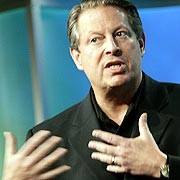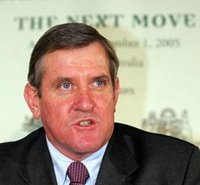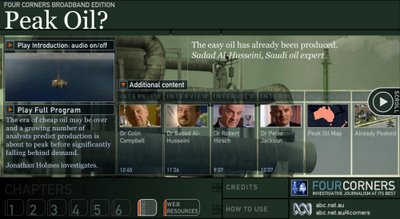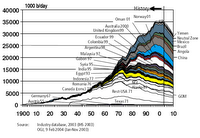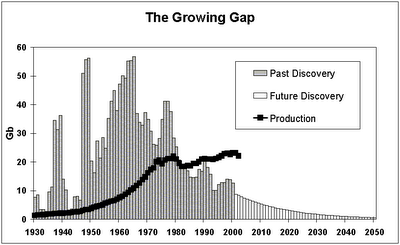Sea level rise alarmism
The Sydney Morning Herald ran this alarming story today about sea level rise, along with this frightening picture...
 A satellite image of Australia if sea levels were to rise by 300 metres
A satellite image of Australia if sea levels were to rise by 300 metresClimate change has many serious implications, particularly for Australia, but sea level rise isn't one of them, at least not in the short term. It seems to me Australians should be more worried about worsening droughts and bushfires, more intense cyclones and storms, reduced snowfall in the alps, and destruction of the Great Barrier Reef than being submerged anytime soon. That said, I wouldn't be rushing out and buying a low-lying beachfront property anytime soon, and there's always the possibilty of ice sheets in Greenland or Antarctica melting ... but even this would take hundreds of years.
The story in the SMH says:
IT IS Australia as we have never seen it before - a dry brown land transformed into an archipelago of disparate islands.And continues:The six images, a fusion of art and science, portray what would happen if sea levels rose by up to 500 metres and the waters inundated the lower-lying regions.
Extreme global warming might eventually lead to another rise of 100 metres, he said. "And on a longer geological time scale the indundations shown are not out of the realm of possibility.""Extreme global warming" eh? You can say that again!
A 100m sea level rise is way beyond the most catastrophic forecasts for climate change. According the the IPCC the West Antarctic ice sheet (WAIS) has enough ice to raise the sea level by 6 metres, Greenland by 7.2 metres, and even if the entire Antarctic ice sheet melted into the ocean, the sea level would rise by 'just' 61.1 metres.
So even if both polar icecaps melted completely the sea level rise would be well short of the 100m rise that would supposedly result from 'extreme global warming' and a fraction of the 300m rise depicted the picture above. Quite frankly I don't know where the extra ~230m would come from. That's an awful lot of thermal expansion.
Putting this alarmist nonsense aside, what does the IPCC really say about sea level rise?
In other words, the IPCC's best guess is a 48cm rise over the next 94 years. No need to have the tinnie moored to the house for a while yet.For the 35 SRES scenarios, we project a sea level rise of 0.09 to 0.88 m for 1990 to 2100, with a central value of 0.48 m. The central value gives an average rate of 2.2 to 4.4 times the rate over the 20th century. If terrestrial storage continued at its present rates, the projections could be changed by –0.21 to +0.11 m. For an average AOGCM, the SRES scenarios give results which differ by 0.02 m or less for the first half of the 21st century. By 2100, they vary over a range amounting to about 50% of the central value. Beyond the 21st century, sea level rise will depend strongly on the emissions scenario.
The West Antarctic ice sheet (WAIS) has attracted special attention because it contains enough ice to raise sea level by 6 m and because of suggestions that instabilities associated with its being grounded below sea level may result in rapid ice discharge when the surrounding ice shelves are weakened. The range of projections given above makes no allowance for ice-dynamic instability of the WAIS. It is now widely agreed that major loss of grounded ice and accelerated sea level rise are very unlikely during the 21st century.
» read more

